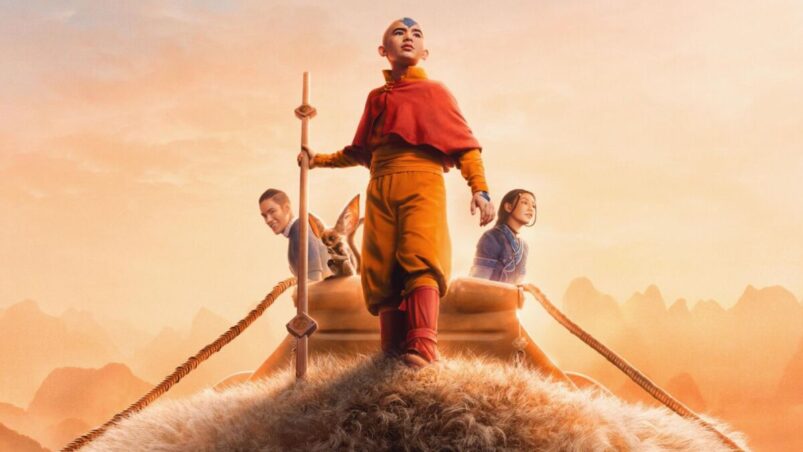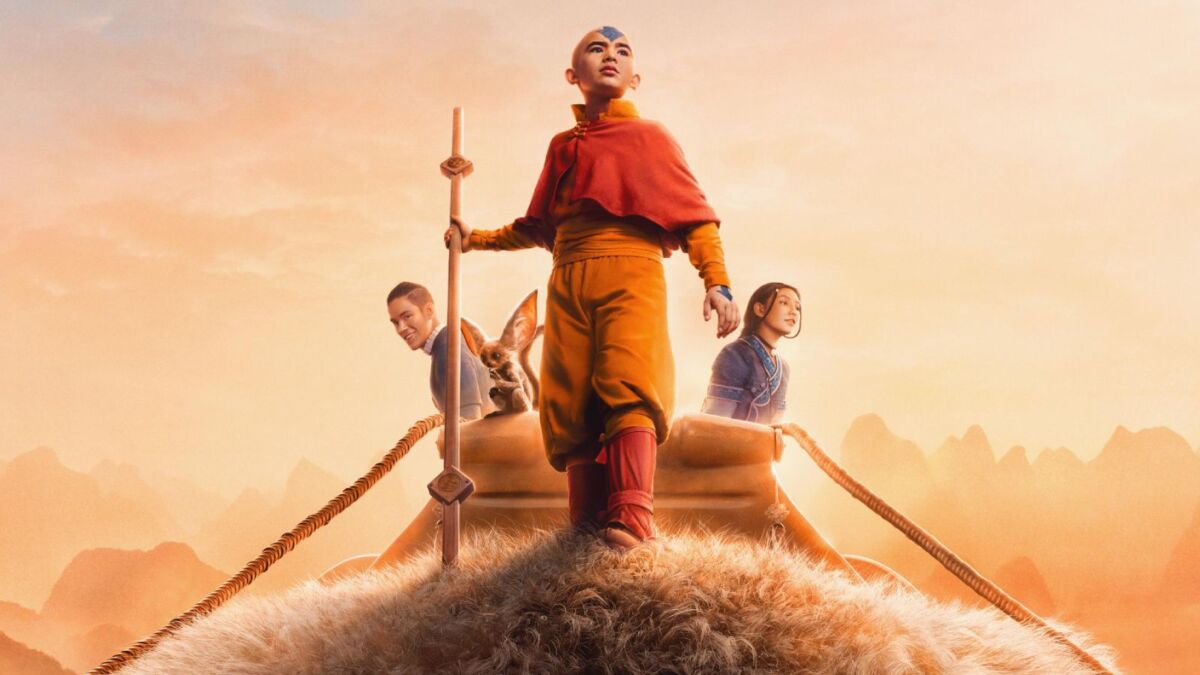CONTENT WARNING: the following review of Netflix’s live-action adaptation of Avatar: The Last Airbender is written by a reporter who has not, repeat, has not seen the beloved original, and as such this won’t be judging the show purely on how faithful a recreation of the original it is. For that reason reader discretion is advised.
It was hard not to be intimately aware that there was an original throughout the experience of watching it. Avatar gives off very much the same flavour and texture that, for instance, a film adaptation of a well-regarded book tends to. Though it never goes in assuming you already know (and hopefully love) these characters, it does seem to halfway expect that you do.
Perhaps this seeming familiarity is a product of building blocks that will be familiar to most everyone watching it. From five minutes in, Avatar is very clear that there is a chosen one, and scrappy underdogs in blue versus a well-funded and heavily armed opposing force who’s coloured red is visual language that, as Star Wars made very clear, you don’t even particularly need to explain in words.
So it’s accessible from the off – but there are some very obvious seams and fault lines showing from the process of adaptation. In my review of Netflix’s version of One Piece, I talked about anime-esque visual cues that couldn’t help but look a little strange in live-action, like bright primary-coloured hair. And there is plenty of that here, like the people with blue arrows drawn on their head, or the spectacularly angular sideburns of one junior officer, but with Avatar it goes beyond the merely visual.
As I’ve said, I haven’t seen the original and don’t intend to compare it to this on a one-to-one basis, but even then, you can feel where plot points are having to be rattled off faster than seems at all natural. There’s more than one section of extended exposition, and an awful lot of us the audience being told what a character is like before they even get the chance to show us for themselves.
Likewise, when the narrative actively distorts around a character who’s had maybe two lines and as many minutes actually onscreen, it’s easy to imagine that they’re being treated as so important because, in their original form, they were. And when our protagonists are shunted briskly into a new locale (or, God help us, a separate realm of reality) with minimal rationale, again, it’s clearly the show having to paper over the cracks where something else should have been.
Huge parts of Avatar: The Last Airbender’s fantasy world are, naturally, grand designs of CGI – which by and large gets it right. Like the M. Night Shymalan movie, it is at times too dark, but this iteration keeps that restricted to darker scenes (night-time, caves, etc) rather than this being a feature throughout. Less fortunately, protagonist Aang’s airbending powers frequently just look like the film stock has been distorted somehow.
(Which is another awkward visual translation – compare The Legend of Zelda: The Wind Waker, whose cel-shaded graphics were very effective for showing wind as a physical presence.)
While the CGI itself is generally fine and often eye-popping, it does carry with it the usual knock-on effect. Actors, especially child actors, having to both imagine what the finished product will actually look like and also react to it properly, is a failed experiment that the industry simply won’t stop trying, for reasons of its own. Things that should inspire wonder get only confusion, or possibly mild gassiness.
The special effects do, at least, gel with the action scenes, which is after all where they really come out to play. You don’t miss much by not having a delicate reaction shot when a half-dozen armoured soldiers are knocked off their feet by a blast of pure, concentrated special effects. There’s a little bit of the theme-park rollercoaster ride to it when people are actually dancing around on top of their computerised elemental powers, but only a little.
For what is, at worst, a PG presentation, Avatar: The Last Airbender does grapple with some hefty topics. Extremists bombing their own populace to radicalise the moderates is not a plot point you’d expect from the same production that features a pesky flying squirrel comic relief. And for all that the show revolves around battling a big evil empire, it is eager to muddy those waters, exploring sympathetic members of the ‘baddies’ and unsympathetic members of the ‘goodies’.
But this exploration only goes so far. I’m hesitant to assume this is another detail which was lost in translation, but it frequently has major characters touch on some point of inner turmoil – and these are weighty points, too, like survivor’s guilt or being abused by a parent – only to brush straight past this personal conflict in short order, and carry right on with what the narrative demands of them.
There again, when you get to what Avatar: The Last Airbender clearly considers some meaty philosophising, you may wish it was a bit more brisk about it. There’s nothing wrong with morals like ‘we have to work together’ or ‘don’t dwell on the past’, but they still sting when you’re beaten around the head with them for minutes at a time. Even some quite lazy lighter moments end up significantly more charming.
Like Netflix’s One Piece, Avatar: The Last Airbender succeeds in creating a live-action action-centric popcorn experience – but is hampered by its attempts to be something more than that. And that something does seem to basically be the original. It’s trying to shove a square peg through a round hole, a situation where a good chunk of what you want will make it through, but will by necessity mean losing all those interesting edges.
READ MORE: Skill Vs Talent – The Hidden Debate Of Avatar: The Last Airbender
Some of the coverage you find on Cultured Vultures contains affiliate links, which provide us with small commissions based on purchases made from visiting our site.


